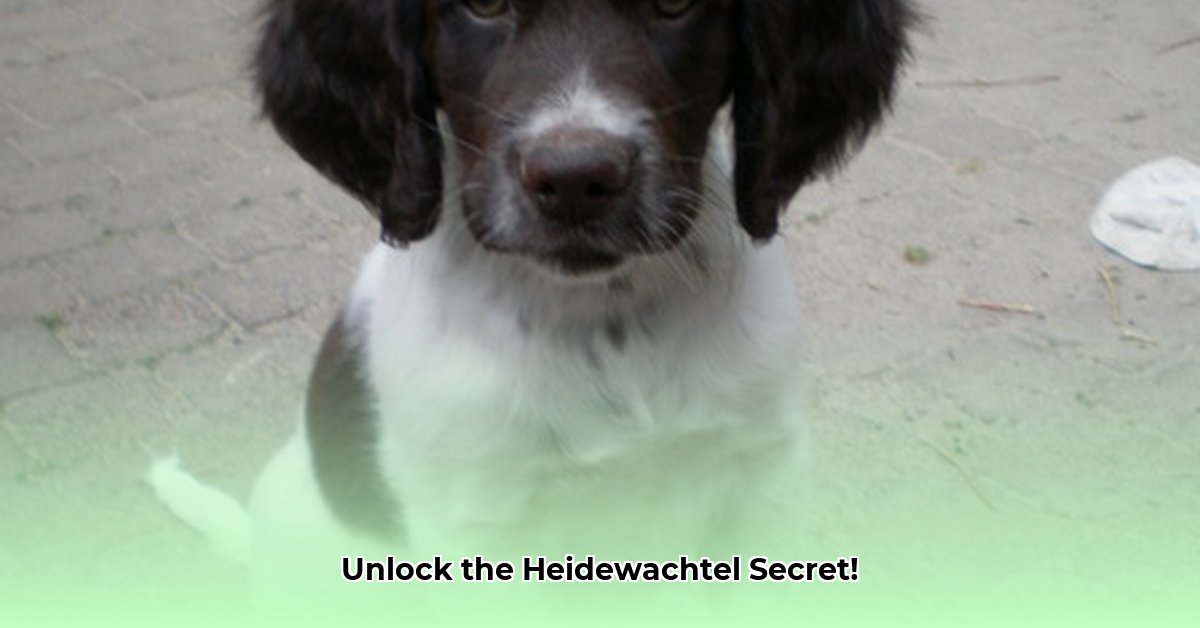
Heidewachtel Karakter: A Deep Dive into Ownership
Considering a Heidewachtel Karakter? Jy’s in for a treat! These dogs, also known as Small Münsterländers, are truly special, combining intelligence with a playful spirit. But before you bring one home, let’s ensure you’re fully prepared for the journey ahead. This comprehensive guide covers everything from choosing the right pup to understanding their unique health needs.
Understanding the Heidewachtel's Heritage
Originating from Germany's Münsterland region, the Heidewachtel was bred for hunting. This background shapes their personality: intelligent, energetic, and fiercely loyal, but also somewhat independent. Think of them as clever, self-reliant companions who thrive with consistent, positive training.
Grooming Your Heidewachtel: Maintaining a Healthy Coat
Maintaining your Heidewachtel's gorgeous coat is relatively straightforward. Regular brushing, twice a week, prevents matting and keeps their skin healthy. Pay extra attention to the longer hair on their ears, legs, and tail to avoid irritating tangles. Occasional baths are fine, but avoid over-bathing, which can dry out their skin.
Training Your Heidewachtel: Building a Strong Bond
Training a Heidewachtel is less about dominance and more about building a partnership. These smart dogs learn quickly, but their hunting instincts might require some patience. Always use positive reinforcement: rewards and praise work wonders in building a stronger bond and discouraging undesired behaviour. Early socialization is also vital – exposing your pup to different experiences from a young age will ensure they develop into a well-adjusted adult.
Did you know? Heidewachtels are highly trainable and excel in various canine activities, including hunting, obedience and agility. This versatility makes them truly unique. What other breed offers such a combination of hunting instinct and trainability?
Heidewachtel Health: Proactive Care for a Long, Happy Life
Regular vet visits are non-negotiable. Heidewachtels are prone to certain health issues, including hip dysplasia and cataracts. Early detection is key to effective management. Choosing a responsible breeder who screens their dogs for these conditions is a crucial first step.
Dr. Anya Sharma, Veterinary Specialist at the Cape Town Veterinary Clinic, states, "Responsible breeding and early detection are paramount in managing potential genetic predispositions like hip dysplasia. Regular check-ups are your best defense."
Daily Life with Your Heidewachtel: Balancing Activity and Enrichment
Heidewachtels are energetic dogs, needing substantial daily exercise to maintain both physical and mental wellbeing. Think brisk walks, games of fetch, or even a swim in the sea – make sure to cater to their high energy levels. Mental stimulation is just as important; this can be achieved with interactive puzzle toys or engaging training sessions. A bored Heidewachtel can quickly turn into a mischievous one!
Fact: A minimum of two hours of daily exercise is recommended for an adult Heidewachtel to maintain their physical and mental wellbeing. Are you prepared to commit to this level of activity?
Navigating Potential Challenges: A Realistic Approach
Heidewachtel ownership, while rewarding, presents some potential challenges. Let’s address them proactively:
Advantages of Heidewachtel Ownership:
- Intelligent and Trainable
- Loyal and Affectionate
- Energetic and Playful
- Versatile and Adaptable
Potential Challenges:
- High Energy Levels
- Independent Nature (requiring patient training)
- Potential Health Concerns (hip dysplasia, cataracts)
- Strong Hunting Instincts (requiring careful supervision around small animals)
Mitigating Hip Dysplasia Risk: A Proactive Strategy
Hip dysplasia, a significant concern in Heidewachtels, is a condition affecting the hip joints. While there's no guarantee of prevention, a proactive approach greatly reduces the risk.
Nutrition: Fueling Joint Health
Maintaining a healthy weight is crucial. Consult your vet about an appropriate diet; high-quality food with adequate glucosamine and chondroitin can help support joint health. Avoid overfeeding.
Exercise: The Right Kind, in the Right Amount
Moderate, low-impact exercise is best. Think regular walks, swims, and controlled games of fetch. Avoid strenuous activity or high-impact exercises.
Veterinary Care: Early Detection is Key
Regular veterinary check-ups are essential for early detection and management. Your vet can conduct physical examinations and recommend diagnostic imaging if necessary.
Supplements: With Veterinary Guidance Only
Glucosamine and chondroitin supplements can be beneficial, but only under veterinary supervision. They should never replace a balanced diet and appropriate exercise.
Monitoring for Symptoms
Learn the early warning signs of hip dysplasia: limping, stiffness, difficulty rising, altered gait, and pain during activity. If you spot any of these, consult your vet immediately.